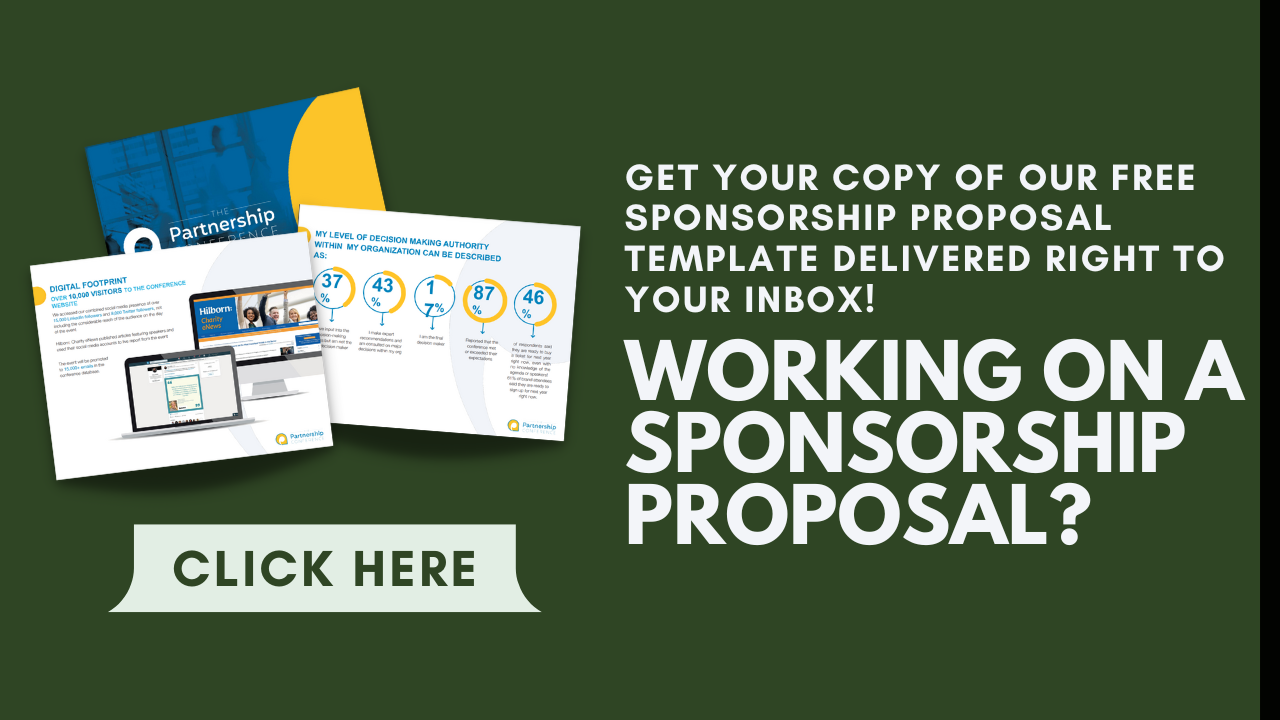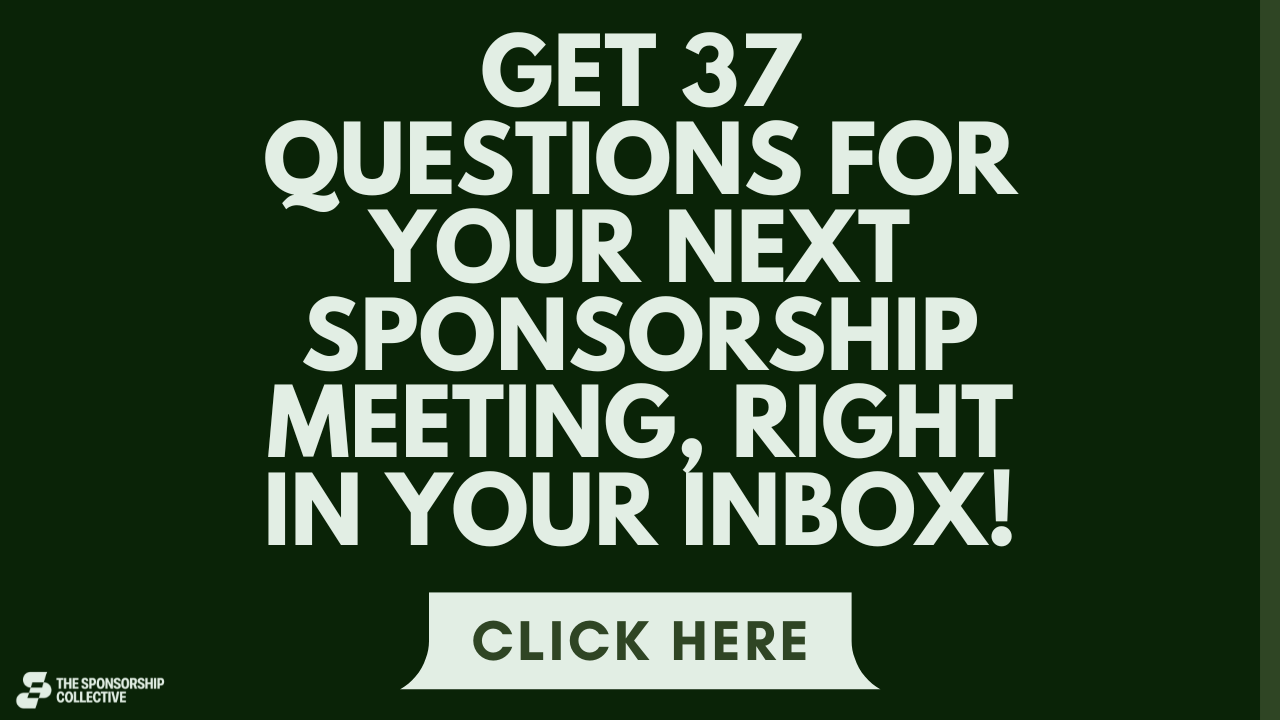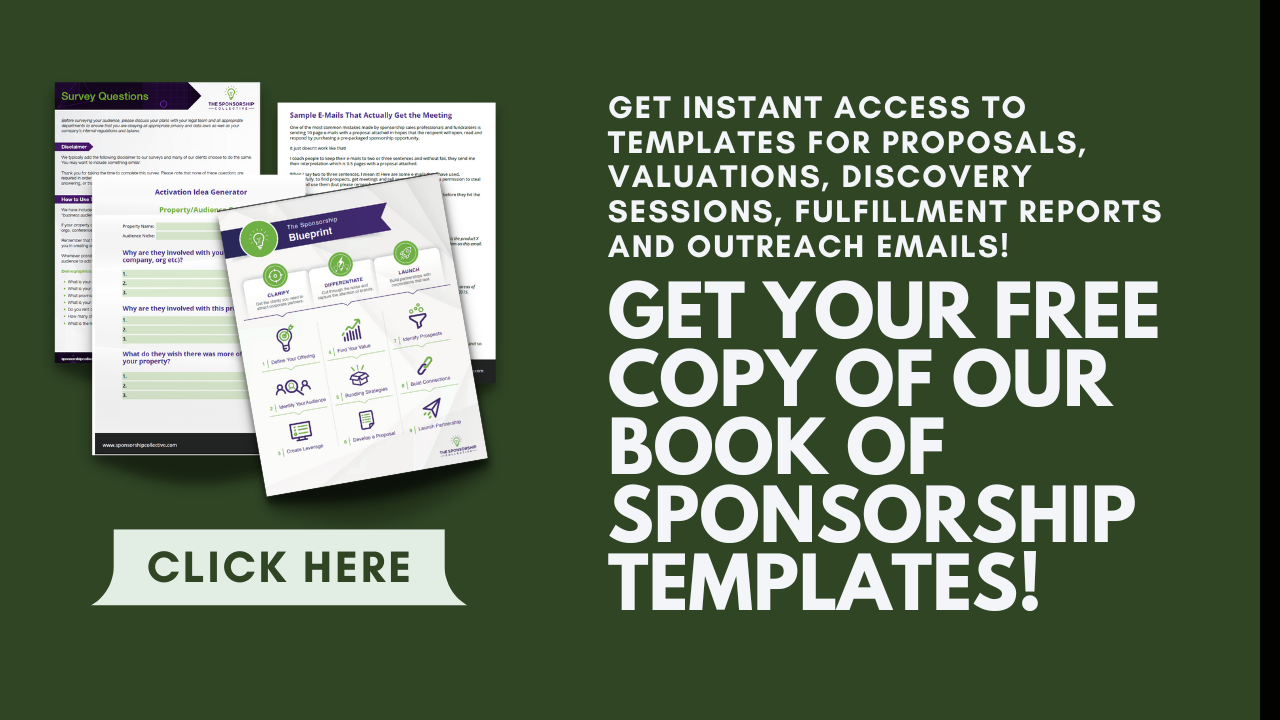I get asked all the time what I think the worst sponsorship advice is or what kinds of misconceptions people have about sponsorship. Another question I get a lot is what the biggest sponsorship problem is. What is that one gaffe that’s so significant it can seriously hurt your chances of getting sponsorship? And much more importantly, how do you fix it?
Before you dive in, if you are involved with a charity or a non profit looking for sponsorship, check out these titles in our “sponsorship for causes” series:
- Cause Marketing versus Corporate Sponsorship
- Sponsorship Cause Marketing Common Mistakes
- Definitive Guide to the Sponsorship Proposal
- Three Things Missing From Every Sponsorship Package
- Corporate Social Responsibility a Users Guide for Nonprofits
- How to Start a Sponsorship Program for Your Nonprofit
- 3 Most Common Barriers To Good Cause Sponsorship
- Things Sponsors Say: “We Don’t do Sponsorship”
- What I Wish I Knew at the Beginning of My Sponsorship Career
The biggest problem with sponsorship is incorrectly pricing your assets. When you guess or assume you know the value of your assets, you and the target sponsor will likely disagree. To fix this problem, price your assets based on type, geography, audience, and/or market value.
If what I said in the paragraph above still isn’t completely clear to you, that’s okay. It’s going to be by the time you’re done reading this article!
Let’s get started.
This Is the Biggest Problem with Sponsorship
Do you still have nightmares where you’re back in high school? I know I do. I want you to think for a moment about the pressure you’d feel taking a test when you were in school, as this will frame the importance of fairly-priced assets.
Let’s set the scene. You struggle in math, but you think you have a good grasp of the concepts featured on this test. You know the mathematical formula–or you think you do–and you rely on it throughout the test.
A few days later, you get your grade. You flunked. How? All your answers made sense, everything looked good, but you screwed up one important part: the numbers.
That’s why I think incorrectly pricing your assets is the biggest problem with sponsorship. You could have a superb sponsorship package and a flawless proposal. You could reach out to the right person at the sponsorship company and have detailed audience research at the ready. In other words, you could do everything right, but if your assets are priced wrong, it’s no dice.
In sponsorship, your assets are everything. They’re what you sell to the sponsor to make money for your event, what sets you apart from the hundreds of other sponsorship proposals the company gets weekly.
Selling anything is an art. You tend to learn this as a kid with your first lemonade stand. If you charge too much for lemonade, no one will buy it, but charging too little means you don’t make enough money.
Some companies pursuing sponsorship are so afraid of not getting the exact amount of cash they need for their event that they make every asset a huge money-maker. Other companies get burnt out by the time they’re preparing their sponsorship package. They’ve spent weeks or months on audience research, surveys, data collecting, and asset creation. Their event deadline is getting closer and closer, so sure, just say your premium logo is worth $500. You can always go back and change it later.
Those mistakes have slivers of truth in them. Some of your assets will be huge money-makers, and you do want to price those higher. But when everything is high-priced, there’s no way to gauge which asset is better than another, and trust me, some assets are always better than others.
Also, you can change your asset pricing, but ideally before you present your sponsorship package. Going back and changing things later without talking to the sponsor is a huge bait and switch.
How to Fix Asset Issues
If wildly mispriced assets have cost you even one sponsorship, that’s one too many. Fortunately, by realizing that you’re making a mistake, you’re already well on your way to improving. Here is what I recommend you do to get more accurately-priced assets that your target sponsors will be willing to agree to.
Take the Time to Evaluate Every Asset
In this post on valuations, I have this quote I want to share with you now. Here it is: “How do you complete a valuation on an inventory of 50, 100, or 1,000 assets? One asset at a time.”
Yes, that’s right. If you manage to create an asset inventory with 1,000 viable assets, then you must sit down and go one by one to determine the worth of each asset. Do I really think you’ll have 1,000 assets to valuate? Probably not. It’ll likely be more like 50 or 100 assets.
Still, the point stands. No matter how many assets you’ve come up with that may incentivize your sponsor, you must evaluate them all.
I recommend grouping like assets together within your asset inventory. For example, you might include the use of venue and exhibiting opportunities together. I suggest doing this for neatness’s sake, not so you can assume that venue usage costs and exhibiting opportunity costs are the same because they’re similar enough.
Remember, you have to evaluate every asset, even the ones that seem similar.
What if you’re under a huge time crunch because your event is coming up and you need to find a sponsor by the end of the week? Well, next time, I would tell you to start pursuing sponsorship a lot earlier to avoid these stressful kinds of moments.
For now, I’d streamline the list of assets, but make sure they’re still meaty. You want to give the sponsor something to bite into, not a pile of chicken bones.
Use the Right Criteria for Asset Valuation
You know better than to wing it when pricing your assets, but what criteria will ensure accurate pricing the target sponsor won’t balk at? You have a few different methods you can rely on, so let’s talk about them now.
- Cost method: Using the cost method, you determine how valuable the asset might be based on what you paid to acquire it. Some assets may appreciate in value while others depreciate, so keep that in mind.
- Market value: I always suggest pricing your assets based on market value, but what is it? Market value uses the current or projected market price for an asset that’s available in the open market.
- Your competition: You’re always trying to stand out from the competition, and sometimes that entails taking a peek over their shoulder to see what they’re up to. This doesn’t mean you should copy the pricing of their assets outright; I’m not saying that. You’re just drawing inspiration, nothing more.
- Geography: A snowblower is worth a premium in Minnesota but would be all but worthless in California. The geographical value of your assets is a lot like that. Depending on where you live and work, some assets may be more or less valuable.
Trust in a Pro
You want your assets list to be perfect when your sponsor finally sees it, but you’re still second-guessing certain parts of the sponsorship package. If so, may I recommend our services? As a valuation expert, I’m sure I can help you overcome whatever hurdle is preventing you from getting the sponsors you want.
Other Significant Problems with Sponsorship to Be Aware of
Your assets list is looking good, but it won’t necessarily be smooth sailing from here. Please don’t become victim to these other sponsorship pitfalls, as they can be just as detrimental!
Making Your Sponsorship Package Confusing
Your sponsorship package is one of the most important parts of your proposal or sponsorship brochure. In your sponsorship package, you lay out your menu of assets nicely and appealingly. Well, you’re supposed to, anyway. A lot of things can go wrong when putting together your sponsorship package if you’re not careful.
You may have read other advice telling you to use a tiered pricing system in your sponsorship package. Maybe even gold, silver, and bronze tiers. Don’t do it. I’m not such a big fan of tiered systems, and in my experience, neither are a lot of sponsors.
The best approach to take for the menu in your sponsorship package is to customize it according to discussions you have with the sponsor. If you have a smaller sponsor, your menu will be appropriately sized since this sponsor doesn’t have as much money to fund your event. For bigger sponsors, a more robust menu is best.
Make sure that for each asset on the menu, you list its benefits, as this will help convince the sponsor to try something that they might have otherwise skipped. It’s like when you go out to eat and your friends all love a certain dish, so you order it based on their recommendation.
Ask someone in your department who didn’t work on the sponsorship proposal to look it over before the sponsor sees it. Is anything confusing or unclear? If a random person is having a hard time navigating the menu, so too will the target sponsor.
Writing a Sponsorship Proposal That’s Too Long
You’ve been working on your sponsorship proposal for weeks now, and you think it’s pretty good. If I may ask, how long is it?
If you say anything more than six pages, it’s too long.
Wait, six pages? That’s it? Indeed, that’s it. Six pages are just enough to pique the interest of your target sponsor so they ask for more information.
Here’s another surprising thing: you get one paragraph on one page to discuss your company or cause.
The verbiage you use here is important. You don’t want to look like a charity case nor a sad sap. If you say things like “we don’t have enough money” or that you’re “having a hard time,” this doesn’t come across the way you think it will. Instead of creating sympathy in the sponsor, they may see this language as a red flag. After all, if your company is having such a hard time, how will you live up to the promises you’re making?
I’m not saying to tiptoe around the fact that you want money. Please don’t do that. Obstructing how much cash you need is a great way to get less than what your event requires. Instead, describe your need for funding in such a way that doesn’t come across as negative.
Here is my template for writing all six pages of your sponsorship proposal. I think you’ll get a lot of use out of it!
Conclusion
Failing to evaluate your assets or doing so incorrectly is without a doubt the biggest problem with sponsorship. You’ll turn potential sponsors away even if your assets are good because the prices are so bloated. I hope this post gets you on the right track to evaluating your assets more accurately!
- About the Author
- Latest Posts
Chris Baylis is the Founder and Editor-in-Chief of The Sponsorship Collective.
After spending several years in the field as a sponsorship professional and consultant, Chris now spends his time working with clients to help them understand their audiences, build activations that sponsors want, apply market values to their assets and build strategies that drive sales.
Read More about Chris Baylis




